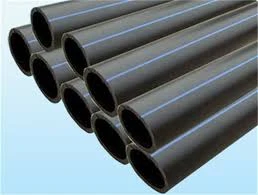Nov . 09, 2024 01:24 Back to list
HDPE Culvert Pipe Applications and Benefits for Modern Infrastructure Solutions
The Advantages of HDPE Culvert Pipes
High-Density Polyethylene (HDPE) culvert pipes have gained immense popularity in various infrastructure projects due to their remarkable durability, flexibility, and cost-effectiveness. As environmental concerns rise and the demand for sustainable materials increases, HDPE pipe systems stand out for their unique properties and wide range of applications. This article explores the benefits of HDPE culvert pipes and their role in modern drainage solutions.
What is HDPE?
High-Density Polyethylene, commonly known as HDPE, is a thermoplastic polymer made from petroleum. It is recognized for its high strength-to-density ratio, making it ideal for a variety of applications, especially in the manufacturing of pipes. HDPE’s characteristics include resistance to corrosion, chemicals, and UV radiation, which make it a preferred material in civil engineering projects.
Key Benefits of HDPE Culvert Pipes
1. Durability and Longevity One of the standout features of HDPE pipes is their impressive lifespan, often exceeding 50 years. These pipes are resistant to corrosion and rust, which is a common issue with metal or concrete alternatives. Additionally, HDPE’s ability to withstand harsh environmental conditions ensures that they maintain structural integrity over time.
2. Flexibility and Lightweight HDPE pipes are notably flexible yet strong, allowing them to withstand shifting soils and ground movements without cracking. Moreover, the lightweight nature of HDPE makes handling and installation considerably easier and less labor-intensive compared to heavier materials, reducing overall project costs.
3. Cost-Effectiveness While the initial material costs may sometimes be on par with other options, the long-term savings associated with HDPE culvert pipes are substantial. Their durability reduces the need for frequent repairs and replacements, leading to lower maintenance costs. The ease of installation also translates to significant savings in labor costs.
4. Environmental Impact HDPE is a recyclable material, contributing to its eco-friendliness. The use of HDPE prevents the depletion of natural resources and minimizes environmental disruptions. Its lightweight nature also reduces the carbon footprint during transportation.
hdpe culvert pipe

5. Hydraulic Performance HDPE culvert pipes have a smooth interior surface that minimizes frictional losses, enhancing flow rates and improving overall hydraulic performance. This characteristic is particularly beneficial in drainage systems, where efficient water flow is critical to preventing flooding and erosion.
6. Wide Range of Applications HDPE culvert pipes are versatile and can be utilized in various applications, including stormwater management, road and railway drainage, agricultural irrigation systems, and even in residential settings for water management solutions. This adaptability makes them a go-to choice for engineers and contractors alike.
Installation and Maintenance
The installation of HDPE culvert pipes is straightforward. They can be fused at joints using heat fusion techniques, ensuring a continuous structure without leaks. Their resistance to blockages also means that they generally require less maintenance than traditional culvert materials.
However, it is essential to consider proper design and installation practices to maximize the benefits of HDPE pipes. Factors such as soil type, surrounding landscape, and anticipated load conditions should guide selection and installation to ensure optimal performance.
Conclusion
In conclusion, HDPE culvert pipes represent a modern solution to age-old infrastructure challenges. Their unparalleled durability, flexibility, and cost-effectiveness make them a preferred choice for civil engineers and contractors. As the industry continues to focus on sustainable practices and materials, HDPE pipes will undoubtedly play a key role in shaping the future of drainage and water management systems.
Adopting HDPE technology not only aligns with contemporary environmental goals but undoubtedly offers practical advantages that contribute to the longevity and efficiency of infrastructure projects. As communities prioritize sustainable and resilient solutions, HDPE culvert pipes will be instrumental in building a more reliable and eco-friendly future for our infrastructure systems.
-
HDPE Natural Sheet: Durable, Food-Grade & Versatile Plastic Solutions
NewsAug.27,2025
-
Durable Glossy PVC Rigid Sheet | Premium High-Shine Panels
NewsAug.26,2025
-
Durable PP Rigid Sheet: Lightweight, Chemical Resistant Solutions
NewsAug.21,2025
-
PVC Grey Sheet for Extraction: Chemical Resistant & Durable
NewsAug.19,2025
-
Durable PVC Pipe Fittings for Plumbing & Irrigation Needs
NewsAug.18,2025
-
HDPE Steel Belt Reinforced Spiral Corrugated Pipe | High Strength
NewsAug.17,2025

